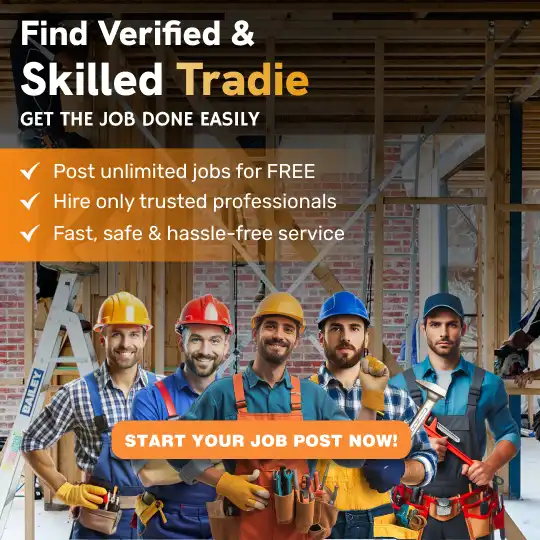How Cultural & Language Barriers Can Affect Tradie Work?

Australia is home to one of the most diverse workforces in the world. With people from different countries, languages, and cultural backgrounds working side by side, it’s no surprise that the trades industry reflects this diversity too. From carpenters and electricians to plumbers and painters, tradies come from all walks of life.
But while this diversity is a strength, it also brings challenges. One of the biggest ones? Cultural and language barriers. When communication breaks down, even the most skilled tradie can run into issues on the job. Misunderstandings can lead to mistakes, delays, or even safety risks. That’s why it’s so important to understand how tradie communication can be affected by cultural and language differences, and how both tradies and clients can work together to overcome them.
In this blog, we’ll explore the impact of cultural differences, language barriers, and the challenges tradies face in a multicultural country like Australia.
Why Communication Matters in Tradie Work?
At its core, tradie work depends on clear communication. Whether it’s a plumber explaining repair costs, an electrician asking about safety concerns, or a builder discussing timelines, tradie communication is just as important as technical skills.
Without clear communication, even simple jobs can turn into big problems:
-
A client may feel frustrated if instructions aren’t followed properly.
-
A tradie may waste time fixing mistakes caused by miscommunication.
-
Safety hazards may arise if directions are not clearly understood.
Good communication builds trust, saves time, and ensures the job is done right. But when cultural or language barriers come into play, smooth communication can sometimes feel harder than the work itself.
How Cultural Differences Affect Tradie Work?
Culture shapes how people speak, behave, and even how they approach work. In a multicultural country like Australia, how cultural differences affect tradie work is a topic that can’t be ignored.
Here are a few common ways cultural differences can create challenges on-site:
1. Different Communication Styles
In some cultures, people are very direct when they speak. In others, communication is more subtle or indirect. For example:
-
A client may expect a tradie to give clear, detailed updates.
-
A tradie from a different background may hesitate to speak up or disagree out of politeness.
This difference in style can cause misunderstandings. What seems “polite” in one culture might feel “unclear” in another.
2. Attitudes Toward Time
In the trades industry, being on time is crucial. But in some cultures, time may be viewed more flexibly. A tradie might think arriving a little late is no big deal, while the client sees it as unprofessional.
These small differences can create unnecessary tension, even if the work itself is high-quality.
3. Workplace Hierarchies
In some cultures, people are used to strict workplace hierarchies, where questioning or challenging a supervisor is not acceptable. But in Australia, work environments are often more casual, and questioning or suggesting improvements is encouraged.
If a tradie isn’t comfortable speaking up, valuable ideas may never be shared, or safety issues might be overlooked.
4. Client Expectations
Clients in Australia may expect certain traditions, like shaking hands, making small talk, or explaining every step of the job. A tradie unfamiliar with these expectations might appear rude or uninterested, even if that’s not their intention.
Language Barrier Issues With Tradies
While cultural differences can cause misunderstandings, language barriers in hiring tradies in Australia add another layer of difficulty. English may not be a tradie’s first language, and this can impact how smoothly jobs are carried out.
Here’s how language barrier issues with tradies typically show up:
1. Difficulty Understanding Instructions
If a client gives detailed instructions in English, a tradie with limited language skills might only catch part of it. This can lead to mistakes in the final work.
2. Struggles With Technical Terms
Trades work often involves technical words, from construction jargon to safety regulations. If a tradie isn’t confident with the language, these terms can become confusing.
3. Safety Concerns
In industries where safety instructions are crucial, miscommunication caused by language barriers can be dangerous. A tradie might miss warnings or not fully understand guidelines, which puts both workers and clients at risk.
4. Pricing and Negotiations
Discussing quotes, costs, and timelines is already tricky. Add a language barrier, and misunderstandings about money can quickly arise. This can damage trust between the tradie and the client.
Real-Life Scenarios of Tradie Problems
To understand how serious this issue can be, let’s look at some everyday examples of tradie problems caused by cultural and language barriers:
-
A painter misunderstands a client’s request for “two coats of paint” and only applies one. The job has to be redone.
-
An electrician struggles to explain why a job will take longer than expected, leaving the client frustrated.
-
A plumber doesn’t fully understand safety instructions on a worksite, leading to an accident.
-
A builder quotes a price, but due to language confusion, the client assumes the cost includes extra materials that were never discussed.
In all these situations, the tradie may be highly skilled in their craft, but the communication gap becomes the real problem.
Cultural Challenges Tradies Face in Australia
Australia’s trades industry relies heavily on migrant workers, especially in construction, plumbing, and electrical jobs. While this diversity brings talent and strength, cultural challenges tradies face are very real.
Some of the biggest challenges include:
-
Adapting to Aussie slang and casual style: Australian clients often use casual language or slang words that aren’t easy to understand for newcomers.
-
Understanding workplace laws and rights: Tradies from overseas may not know about local rules on pay, safety, and workplace behavior.
-
Dealing with stereotypes or bias: Sadly, some clients may assume tradies from different backgrounds are less skilled, even if that’s not true.
-
Balancing cultural identity with workplace expectations: A tradie may have to adjust their cultural habits to fit into the Australian way of working, which can be stressful.
How Clients Can Overcome These Challenges
Cultural and language barriers don’t have to create long-term problems. Clients and tradies can both take steps to make communication smoother.
Here are some practical tips for clients:
-
Be patient and clear: Speak slowly, use simple words, and avoid too much slang.
-
Use visuals: Show photos, drawings, or samples of the work you want. Visuals often speak louder than words.Confirm details in writing: A short written message or text can help make sure everyone’s on the same page.
-
Ask questions: Encourage tradies to repeat or ask questions if they don’t understand.
-
Respect cultural differences: Small gestures like showing respect for traditions or being open to different communication styles can build trust.
How Tradies Can Improve Communication?
Tradies can also take steps to overcome cultural and language barriers and build stronger client relationships. With support from platforms like the Trusted Tradie Network, it becomes easier for workers to access resources, connect with clients, and improve communication skills.
-
Learn key industry terms in English. Focusing on technical words used in daily jobs can make communication easier and reduce misunderstandings.
-
Take short language courses. Even a little practice in English can make a big difference. Many tradies in the Trusted Tradie Network share resources or recommend quick training options that help newcomers.
-
Ask for clarification. Instead of guessing, tradies should feel comfortable asking clients to repeat or rephrase instructions. Trusted Tradie Network encourages open communication, helping tradies feel more confident on-site.
-
Use translation tools. Apps or online tools can help tradies double-check meanings quickly, especially during urgent work situations.
-
Observe and adapt. Watching how local tradies interact with clients can help newcomers adjust faster. By being part of the Trusted Tradie Network, tradies also get exposure to best practices followed by experienced professionals in Australia.
By improving their communication skills and using support networks like Trusted Tradie Network, tradies can not only overcome language and cultural challenges but also strengthen their reputation in the industry.
Why Overcoming These Barriers Matters?
At the end of the day, both clients and tradies want the same result: a job done right, on time, and without unnecessary stress. Overcoming cultural and language barriers in tradie work is not just about smoother projects, it’s about creating long-term trust and efficiency.
Building trust between clients and tradies. Clear tradie communication helps clients feel confident in the work being done. When everyone understands each other, there’s less room for doubt or miscommunication.
Ensuring safety on worksites. Many tradie problems arise when safety instructions are not properly understood. Removing language barrier issues with tradies means fewer risks and safer environments for everyone.
Saving time and money by avoiding mistakes. Misunderstandings due to cultural differences or unclear instructions often lead to delays or rework. By improving communication, both clients and tradies save time, money, and effort.
Encouraging diversity in Australia’s workforce. Australia is known for its multicultural community. When we break down cultural challenges tradies face, it allows people from all backgrounds to thrive in the industry. Diversity also brings in new skills and fresh ideas.
Improving client satisfaction. A client who feels heard and understood is more likely to recommend that tradie again. Good communication turns one-time jobs into long-term relationships.
Creating a stronger industry. By addressing language barriers in hiring tradies in Australia, the trades industry can become more professional, inclusive, and reliable.
Tradies bring incredible skill, knowledge, and experience from different parts of the world. By improving tradie communication and breaking down barriers, we build not only better projects but also a stronger, more connected community.
Final Thoughts
Cultural and language differences will always be part of Australia’s tradie workforce, and that’s not a bad thing. In fact, diversity makes the industry stronger and more creative. But it also means clients and tradies need to put in extra effort to communicate clearly.
From understanding how cultural differences affect tradie work to dealing with language barrier issues with tradies, the goal should always be the same: clarity, respect, and teamwork.
When clients stay patient, and tradies take steps to improve communication, many of the common tradie problems disappear. The result? Better jobs, safer worksites, and stronger relationships built on trust.
So next time you’re working with a tradie from a different background, remember—good communication is just as important as good craftsmanship.

